Stechford, an area on the eastern side of the city of Birmingham, was defended by the 39th Warwickshire (Birmingham) Battalion of the Home Guard, under the command of
Lt.-Col. A.G. Colley. The Battalion's "A" Company provided the Home Guard presence at one of the nearby Rover factories, probably that at Solihull.
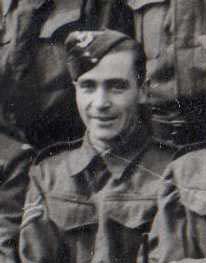 (The Coventry-based Rover Company opened
satellite factories at Acocks Green and Solihull, in 1937 and 1940 respectively, where tanks, tank engines and aero engine components were manufactured. There was also an early involvement in the production of aircraft gas turbine engines, work which was later transferred to Rolls-Royce).
(The Coventry-based Rover Company opened
satellite factories at Acocks Green and Solihull, in 1937 and 1940 respectively, where tanks, tank engines and aero engine components were manufactured. There was also an early involvement in the production of aircraft gas turbine engines, work which was later transferred to Rolls-Royce).
A member of the Rover unit was
Eric Charles Pain
(right, in 1941) whose nephew has preserved the information on this page and generously permitted its publication here.
Here, below, is a view of "A" Coy. taken in August 1941.
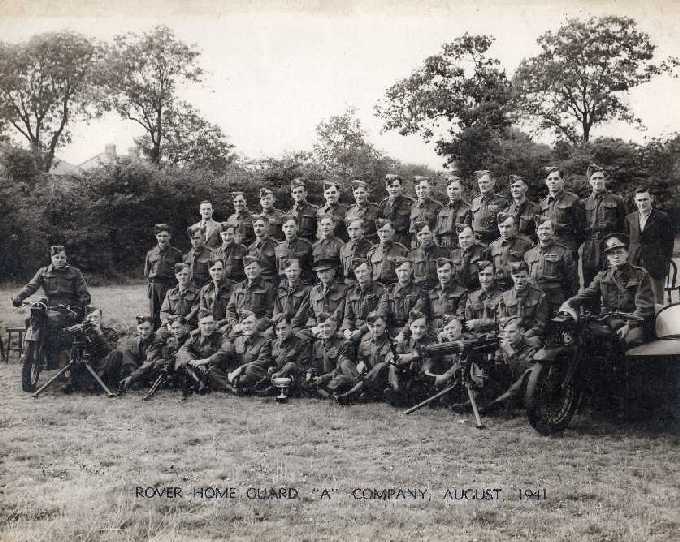
Click on image for expanded version
Eric Pain is in the seated row, second from the right. And here is another view of the same group.
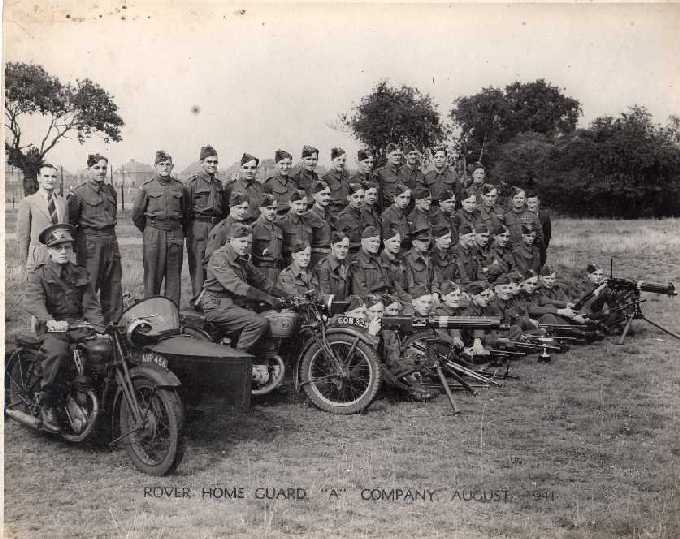
Click on image for expanded version
Another image of "A" Coy. in 1941 in a different location survives:
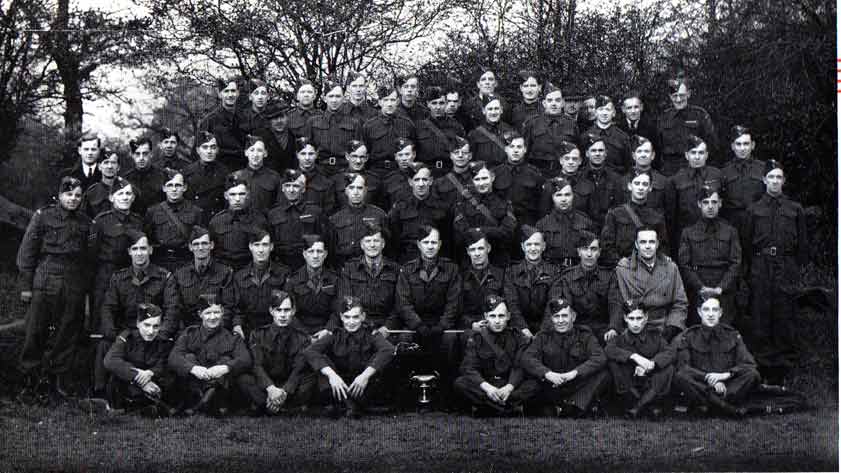
Click on image for expanded version
The Battalion's "B" Coy. was photographed at the same time.
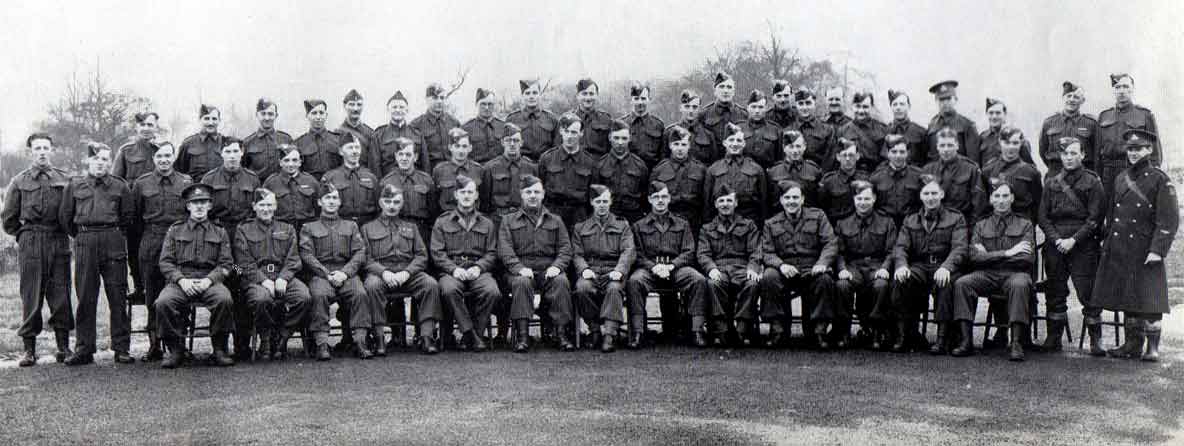
Click on image for expanded version
By the autumn of 1941 the Home Guard had already celebrated its first birthday. Much training had been done and was continuing, members had proper uniforms, the level of armament had been transformed compared with the early, desperate days and a significant
esprit de corps had developed in almost every battalion. The 39th Battalion would have been no exception.
As units throughout the country settled down into their role in the community they served, activities of a more social nature started to emerge. Sometimes these were sporting competitions, designed to instil a spirit of inter-unit rivalry as well as to encourage general physical fitness; or shooting championships. From a very early stage units had also recognised the need to have a fund of private money for use at its own discretion in a variety of circumstances. The latter could include the purchase of items, not part of normal issue, intended to make the lot of members less uncomfortable as they undertook their duties (and in the earliest days even to obtain essential equipment like tin hats more quickly); to relieve hardship for individual Home Guards; and to support social activities such as dances and children's Christmas parties. These funds were partly built up and maintained by traditional fund-raising activities.
From surviving evidence it appears that the 39th Warwickshire (Birmingham) Battalion were particularly professional in this aspect of their activity. The prospect of invasion might have reduced from
the virtual certainty of 1940. But it remained a definite possibility, even a probability: much depended on the extent to which the Russians could withstand the German onslaught and in the autumn of 1941 that was looking doubtful. So the Home Guard knew that it might well be called upon and was still striving to make itself, through intensive training, planning and preparation, the most effective force possible. Nevertheless the 39th felt that it had the time and energy simultaneously to organise a major fund-raising event, a concert.
This was a significant undertaking; in fact it could be described as one of astonishing ambition. It comprised many individual "turns" and was held not in a draughty village hall but in no less a venue than the Alexandra Theatre, one of the major Birmingham theatres to survive the 1940/41 Blitz. Thus Sunday December 7th, 1941 was a significant day for the 39th Battalion, its members and their families and probably a number of other Birmingham citizens not yet exposed to the delights of 24-hour multi-channel television - or indeed to any television at all - and anxious to enjoy some live, light-hearted entertainmment. They all gathered for the performance which was due to start at 3 p.m.
The programme was professionally produced and thanks to Eric Pain and his relatives at least one copy of it has survived:
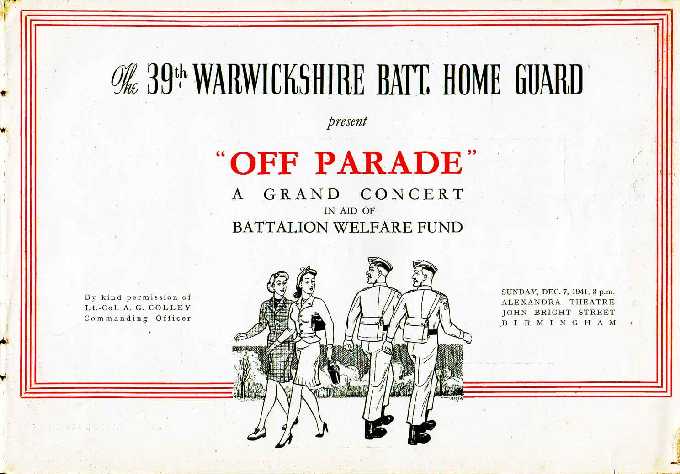
Click on image for expanded version
And here is the programme for the first half of the performance:
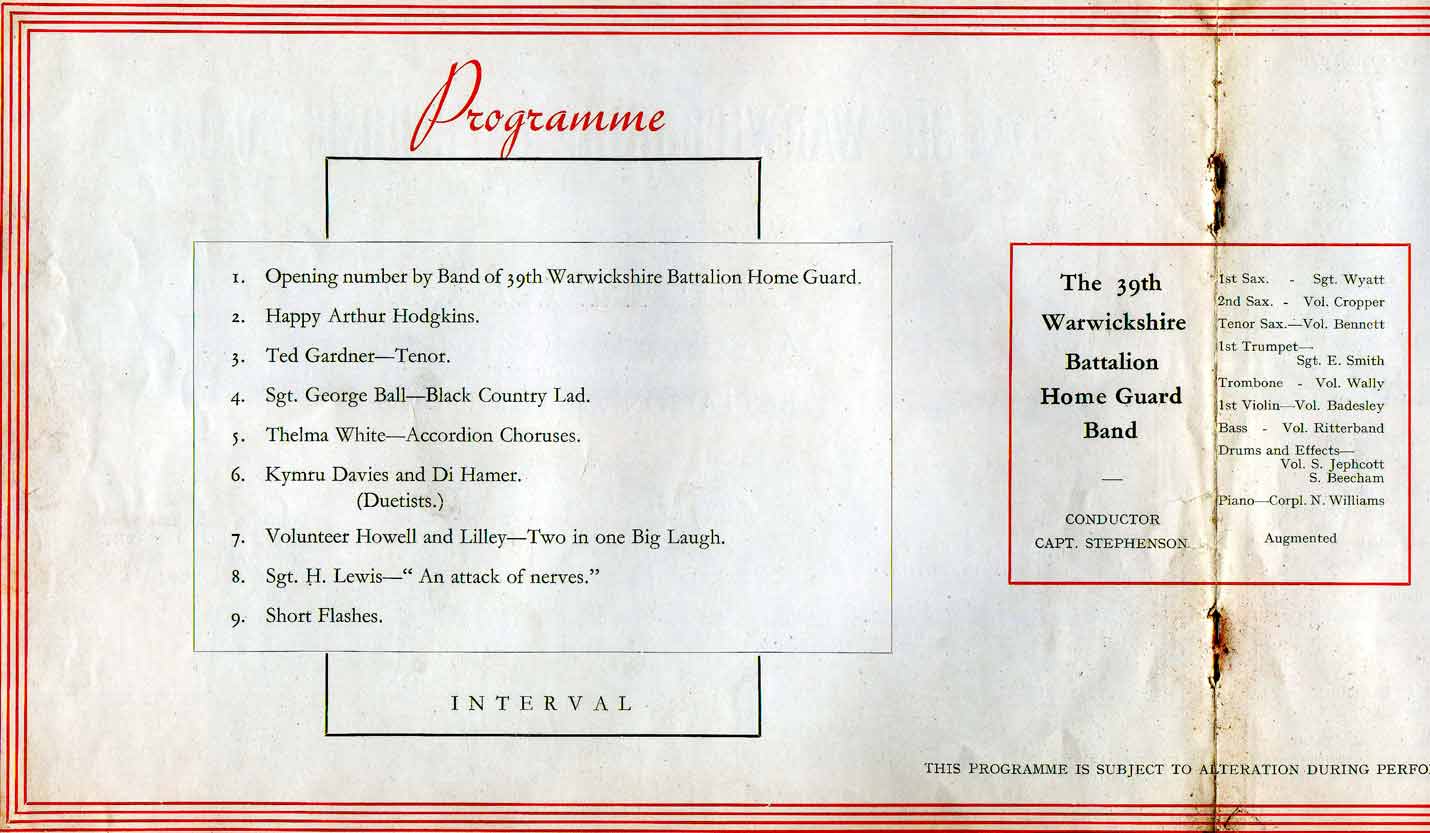
Click on image for expanded version
This Sunday was a significant day in the life of Stechford's Home Guard. But no one in the audience, nor amongst the performers and musicians, could have realised at that moment just what a momentous day it was becoming, perhaps one of the most significant days in the entire eventful history of the 20th century. As the audience were rolling in the aisles at the antics of Volunteers Howell and Lilley, far away in the Pacific Ocean the first of hundreds of aircrew were strapping themselves into their aircraft and firing up their engines as dawn started to break.
The Birmingham audience were soon shuffling out at the interval, to enjoy a cup of tea or something stronger. After the ringing of the warning bell they were back in their seats in the modern auditorium, only in its sixth year of use. The safety curtain was lowered and then raised with frustrating slowness, the Battalion Orchestra struck up and everyone sat back in their seats to enjoy the second half.
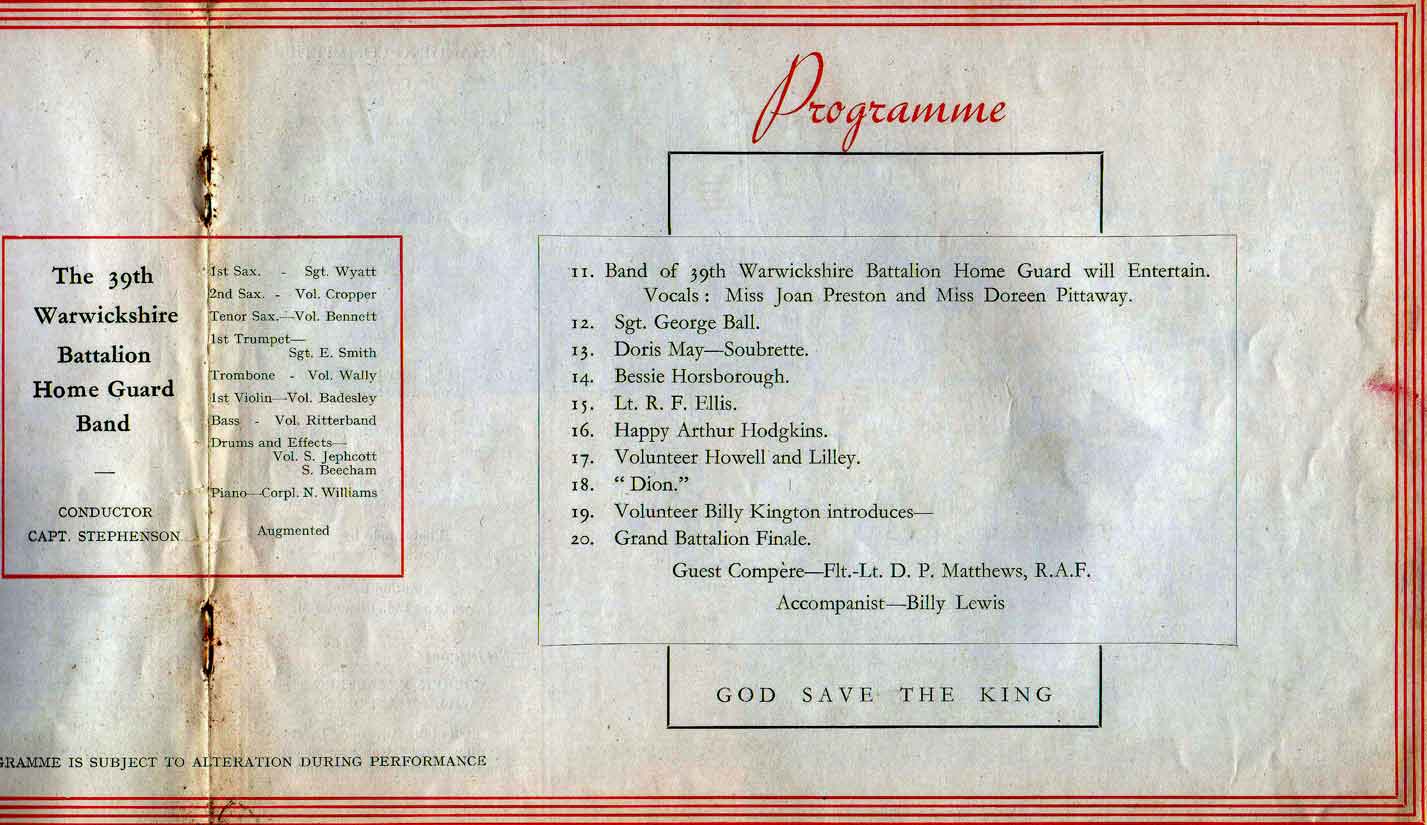
Click on image for expanded version
The performers that afternoon may well have been mainly amateur but some of the participants were very much professionals. Amongst them was Thelma White of Harborne who trod the boards of Midlands theatres in the 1930s and 1940s with "Volunteer Howell and Lilley". Howell and Lilley were a well-known comedy act and the men were members of the Home Guard as their title suggests. Harry Howell lived at that time in Ollerton Road, Yardley. The accompanist, Billy Lewis, was also a professional musician. (More information on Howell and Lilley is available within this
Birmingham History forum thread).
Eventually, after a rousing finale, all the members, friends and supporters of the 39th Battalion, Eric Pain among them, streamed out of the theatre into the pitch blackness of a battered John Bright Street. As they exchanged opinions as to whether Sgt. X had been "a bit weak" or whether the performance of Volunteer Y should be regarded as the triumph of the afternoon, far away and still wholly unknown to them some 360 heavily armed aircraft were by now in the air. And long before many of these worthy Birmingham citizens had reached their homes in Stechford and elsewhere in the city, via bus and tram, the first torpedoes and armour-piercing bombs were raining down upon the U.S. Pacific Fleet at its moorings in Pearl Harbor. It would probably be the following day before anyone heard or read the news; but there can be little doubt that it, and not the previous afternoon's entertainment, would be the main topic of discussion in factory and office that Monday morning.
Sunday, December 7th, 1941 - a momentous day indeed.
(N.B. There is
a
dedicated page for this concert and its programme)
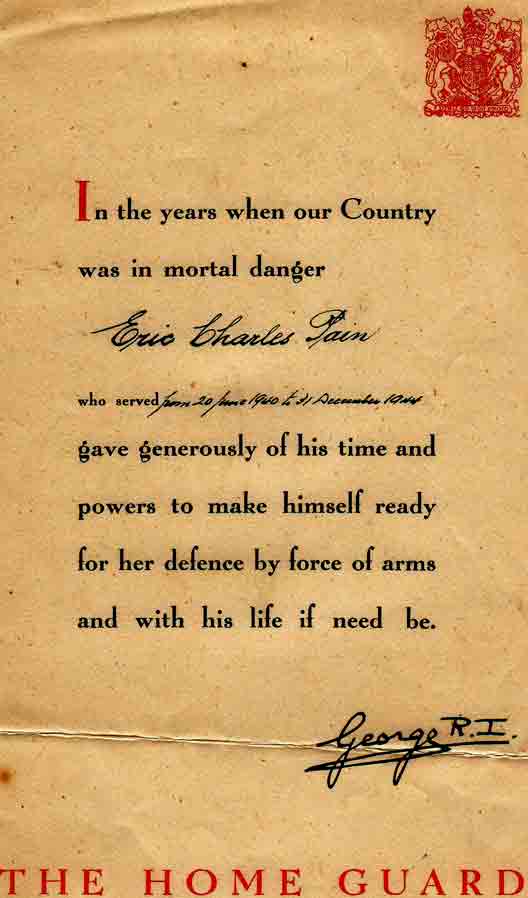
Eric Pain served throughout the life of the Home Guard, for four-and-a-half years, another example of remarkable, devoted and entirely voluntary service.
That long service was acknowledged only by a single piece of paper bearing a facsimile signature of his monarch, H.M. King George VIth; and now perhaps we can acknowledge it too as we honour his memory and that of his comrades almost seventy years later.
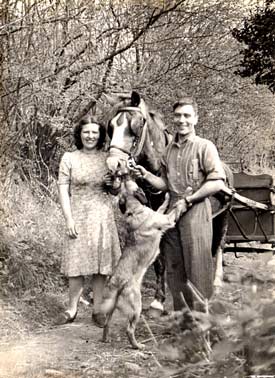
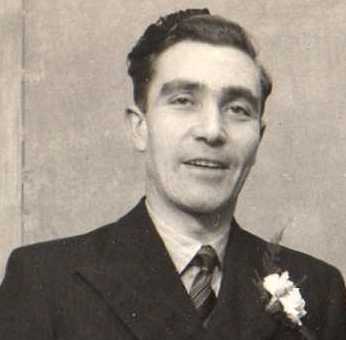 Eric Pain was born in Acton, Brentford on 7th June 1912. He married Marjorie Chawner in Bimingham on 30th January 1943. After his time with Rover he worked at BTH (later to become
AEI Lamp & Lighting). In about 1949 he moved to Herefordshire where he pursued his main hobbies, angling and the Boy Scouts movement in which he was an enthusiastic and devoted scoutmaster and, later, district commissioner. Eventually he moved to the Isle of Wight which was his home until his death on 11th April 1982. Eric Pain was born in Acton, Brentford on 7th June 1912. He married Marjorie Chawner in Bimingham on 30th January 1943. After his time with Rover he worked at BTH (later to become
AEI Lamp & Lighting). In about 1949 he moved to Herefordshire where he pursued his main hobbies, angling and the Boy Scouts movement in which he was an enthusiastic and devoted scoutmaster and, later, district commissioner. Eventually he moved to the Isle of Wight which was his home until his death on 11th April 1982.
|
Images © John Chawner 2008
ACKNOWLEDGEMENT
Grateful acknowledgement is made to John Chawner, USA, for making the information about his uncle and the images available to staffshomeguard.
The original documents (images, certificate and concert programme) are being lodged in the Archives and Heritage section of Birmingham Central Library where they will be accessible to the public.